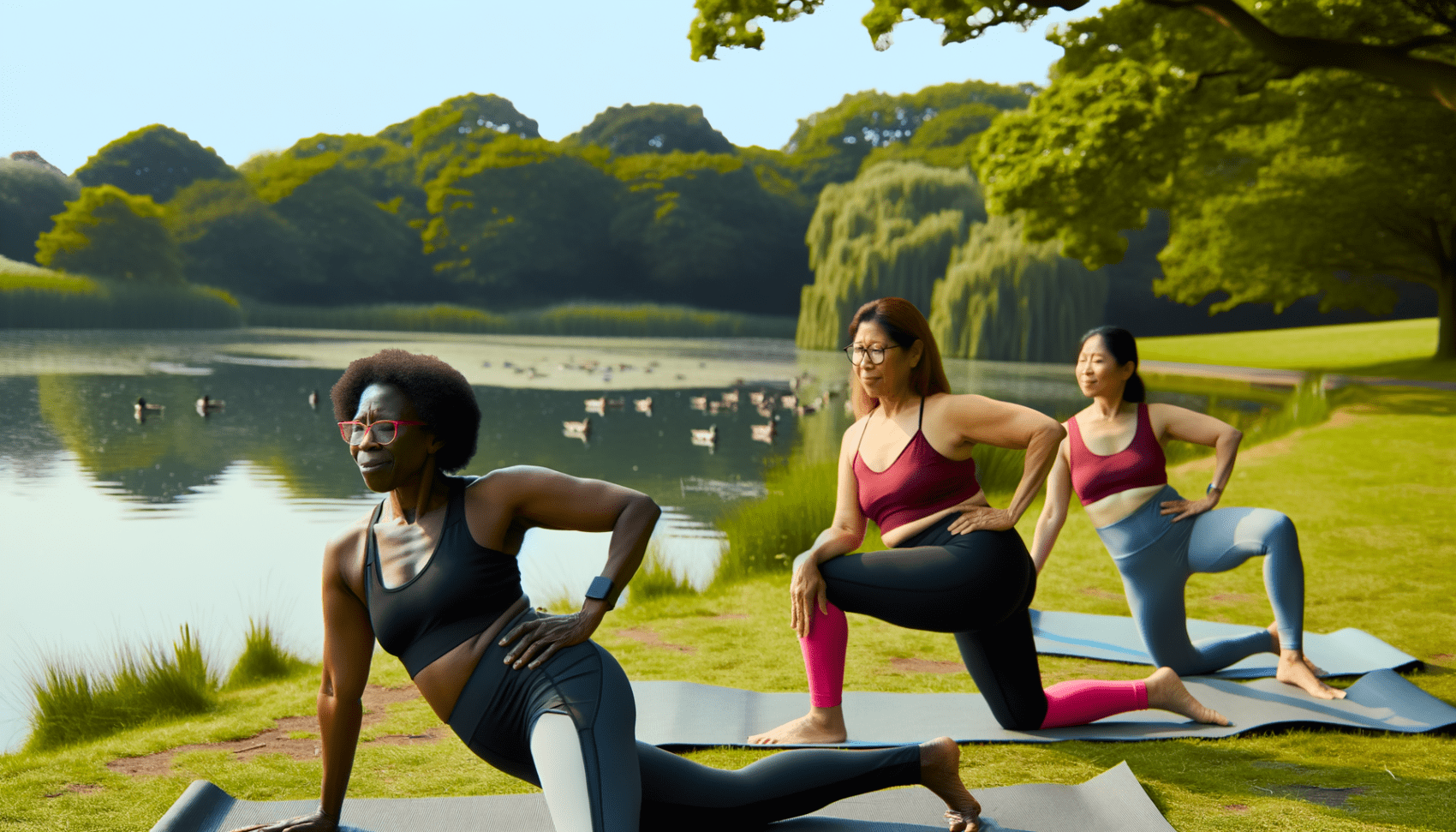Introduction
Understanding the Postpartum Body
Welcoming a new baby into the world is a transformative experience that extends beyond the emotional landscape—it fundamentally alters a mother’s physical form. The postpartum body is a testament to the profound journey of pregnancy and childbirth. It’s essential to recognize that this body is not the same as before; it has undergone significant changes that require time and patience to understand and adapt to. From the natural weight gain to the potential for conditions like diastasis recti and pelvic floor concerns, the body post-birth is in a state of recovery. Embracing this new form with kindness and a gentle approach to activity is the first step in the journey back to fitness.
The Importance of Fitness and Well-being
Physical activity after having a baby isn’t just about shedding pounds or getting back into pre-pregnancy jeans; it’s about holistic well-being. Fitness can enhance mood, improve energy levels, and reduce the risk of postpartum depression. It’s a powerful tool for managing stress and reclaiming a sense of self. Moreover, as exemplified by Jennifer Faraone, a mother and accomplished athlete, fitness can be seamlessly integrated into family life, setting a positive example for children and maintaining a healthy lifestyle for the entire family. However, it’s crucial to approach postpartum exercise strategically, prioritizing long-term goals over immediate results.
Setting Realistic Expectations
One of the most important aspects of returning to fitness after childbirth is setting realistic expectations. The athlete’s mind may be eager to jump back into pre-baby routines, but the postpartum body requires a more measured approach. It’s not about doing less; it’s about doing what’s appropriate for the current state of recovery. This means acknowledging that the body needs time to heal and that the path back to peak fitness may be gradual. By setting achievable goals and celebrating small victories, mothers can maintain motivation without compromising their health. It’s about finding a balance between the drive to be active and the necessity to allow the body to recuperate.
As we delve deeper into the journey of postpartum fitness, it’s essential to carry with us the understanding of our transformed bodies, the significance of our well-being, and the wisdom to set attainable goals. With these principles in mind, we can navigate the path to fitness with confidence and care.
Reconnecting with Your Body
Listening to Your Body’s Signals
After childbirth, your body undergoes a significant transformation, and it’s essential to tune in to its signals. Embrace the concept that less is more during this period. Your athletic brain may urge you to push harder, but patience is key. Recognize that you’re in a new body with unfamiliar considerations. Pay attention to signs of fatigue, discomfort, or pain, and understand that these are indicators to proceed with caution. Conditions such as Diastasis Recti, incontinence, and pelvic organ prolapse are significant and require time and care to heal properly. By listening and responding to your body’s cues, you build a solid foundation for your long-term fitness and well-being.
The Role of Hormones in Postpartum Recovery
Hormones play a crucial role in postpartum recovery. Fluctuations in estrogen and relaxin can affect joint stability and muscle strength, impacting your ability to return to pre-pregnancy fitness levels. It’s important to understand that hormonal changes can extend well beyond the immediate postpartum period, especially if you are breastfeeding. These hormonal shifts require a tailored approach to exercise, one that respects the body’s current state and promotes recovery without risking injury.
Gentle Exercises to Begin With
Starting with gentle exercises is a strategic way to reintroduce physical activity. Begin with pelvic floor strengthening, deep abdominal work, and low-impact activities such as walking, swimming, or stationary cycling. These exercises help rebuild strength without placing undue stress on the body. Incorporate movements that enhance flexibility and stability, like yoga or Pilates, which can also be beneficial during this recovery phase. Remember, the goal is to rebuild gradually and avoid overexertion.
Mindfulness and Meditation
Mindfulness and meditation can be powerful tools in your postpartum fitness journey. These practices help you stay connected with your body and recognize its needs and limitations. Mindfulness encourages a non-judgmental awareness of physical sensations, thoughts, and emotions, fostering a kinder and more patient attitude towards your recovery. Meditation can reduce stress and improve sleep quality, both of which are crucial for healing and energy restoration. By incorporating mindfulness and meditation into your routine, you create space for mental clarity and a more profound sense of well-being, which can positively influence your physical recovery.
TummySafe Core Workout:
When it comes to a TummySafe Core Workout, it’s important to choose exercises that engage the core without creating excessive intra-abdominal pressure (IAP) which can exacerbate diastasis recti. Here are some exercises to consider:
- Incline Bench Press: Supports your torso in a more upright position, reducing stress on the abdominal wall.
- Modified Pull-Ups: Builds strength in the upper back, neck, and shoulders, progressing toward full chin-ups without overloading the core.
- Seated Row: Strengthens the back muscles while maintaining a neutral spine, minimizing pressure on the abdominal separation.
- Chest Fly: Performed on an incline bench to maintain a safe angle for the core while working the chest muscles.
- Lat Pulldown: Strengthens the upper back and lats without putting downward pressure on the core.
Remember to pair exercises that work opposing muscle groups, take water breaks as needed, and always stretch after your workout. Pay attention to your belly’s response during each exercise, and avoid any movements that cause doming, bulging, or discomfort in the abdominal area.
TummySafe Leg Workout:
For a TummySafe Leg Workout, focus on exercises that strengthen the lower body without compromising core integrity:
- Squats with Dumbbells: Keep the weight moderate and focus on form, ensuring your core is engaged and not bulging.
- Leg Press: Use a machine that allows you to press with your legs without creating excessive pressure on the abdomen.
- Deadlifts with Kettlebell: Maintain a neutral spine and engage your core throughout the movement to protect your back and abdominal muscles.
- Leg Extensions: Perform on a machine, focusing on controlled movements and avoiding any strain on the core.
- Hamstring Curls: Use a machine to isolate the hamstrings without involving the core excessively.
Monitor your core engagement during each exercise and adjust as necessary to ensure you’re not creating undue stress on the abdominal separation.
TummySafe Upper Body Workout:
An effective TummySafe Upper Body Workout should build strength without overloading the core:
- Push-Ups with Incline: Modify the traditional push-up by using an incline to reduce the load on the core.
- Bicep Curls: Stand or sit with good posture, engaging your core gently as you perform the curls.
- Tricep Dips: Use a bench or chair, keeping your core tight and avoiding sinking into the shoulders.
- Shoulder Press: Perform seated or standing, ensuring your core doesn’t dome as you press the weights overhead.
- Chest Press: Use dumbbells and perform on an incline bench to maintain a safe angle for the core.
Always listen to your body, and if you feel any discomfort or see any coning in your abdominal area, modify or skip the exercise. Consult with a fitness professional if you’re unsure about the suitability of an exercise for your condition.
Note: These workouts are general suggestions and may not be suitable for everyone. If you have diastasis recti or any other core-related issues, it’s best to consult with a healthcare provider or a fitness professional specialized in postpartum exercise before attempting any new workout routine.
Developing a Fitness Routine
Creating a Personalized Fitness Plan
Embarking on a fitness journey after having a baby requires a tailored approach that respects the unique changes your body has undergone. To create a personalized fitness plan, start by consulting with a healthcare provider to ensure you’re cleared for exercise. Next, consider your fitness history, current physical condition, and personal goals. Whether you’re aiming to return to a pre-pregnancy fitness level or exploring new fitness horizons, your plan should be flexible, progressive, and enjoyable. Incorporate a mix of activities that you love, and be prepared to adjust the intensity, duration, and frequency as your body responds to the routine.
Incorporating Strength Training and Cardio
A balanced fitness routine includes both strength training and cardiovascular exercises. Strength training helps rebuild muscle tone and bone density, which can be affected by pregnancy and childbirth. Focus on core strength, pelvic floor muscles, and overall stability. Cardiovascular activities, such as brisk walking, cycling, or swimming, improve heart health and aid in weight management. Aim for at least 150 minutes of moderate-intensity cardio per week, as recommended by health guidelines, but remember to listen to your body and pace yourself.
Finding Time for Exercise with a Baby
Finding time to exercise with a new baby can be challenging, but it’s not impossible. Schedule workouts during the baby’s naptime, or incorporate your baby into your exercise routine with a jogging stroller or baby carrier. Seek the support of family or friends to watch your baby while you take some time for yourself. Remember, even short bouts of activity can add up to significant benefits, so don’t discount the value of 10-15 minute sessions scattered throughout the day.
Staying Motivated and Tracking Progress
Maintaining motivation is crucial for sticking to a fitness routine. Set achievable short-term goals and celebrate when you reach them. Keep a workout log or use a fitness app to track your progress and stay accountable. Joining a community of other new moms can also provide encouragement and support. Remember, progress postpartum isn’t just measured by pounds or inches lost, but also by how you feel: increased energy levels, improved mood, and greater physical strength are all signs of success.
Overcoming Common Postpartum Challenges
Dealing with Sleep Deprivation
One of the most immediate challenges new mothers face is sleep deprivation. The interrupted sleep patterns due to infant care can lead to exhaustion, affecting both physical and mental health. To combat this, it’s essential to nap when the baby naps and seek help from partners or family members to allow for longer stretches of rest. Establishing a bedtime routine for both mother and baby can also promote better sleep quality. Additionally, prioritizing sleep over less critical tasks can help mothers recover and maintain energy levels for exercise and daily activities.
Managing Stress and Anxiety
Postpartum life can be a source of increased stress and anxiety. To manage these feelings, it’s important to practice stress-reduction techniques such as deep breathing, yoga, or meditation. Regular physical activity is also known to reduce stress and improve mood. Mothers should set aside time for self-care and relaxation, even if it’s just a few minutes a day. It’s also beneficial to connect with other new mothers or support groups to share experiences and coping strategies.
Addressing Body Image Concerns
Many new mothers struggle with changes in their body image postpartum. It’s crucial to acknowledge and accept the natural changes that occur after childbirth. Emphasizing the functional aspects of the body, such as its ability to give birth and recover, can foster a more positive body image. Setting achievable fitness goals that focus on strength and wellness rather than weight loss can also help mothers feel more confident and in control of their bodies.
Seeking Support and Community
Building a support network is vital for overcoming postpartum challenges. This can include family, friends, healthcare providers, and fitness professionals who understand the unique needs of postpartum women. Joining a community, whether it’s a local mother’s group or an online forum, can provide emotional support and practical advice. Additionally, working with a trainer who specializes in postpartum fitness can help mothers safely return to exercise and pursue their athletic interests.
In conclusion, overcoming common postpartum challenges requires a combination of self-care, support, and patience. By addressing sleep deprivation, managing stress and anxiety, embracing body positivity, and seeking out a supportive community, mothers can navigate the postpartum period more effectively and continue to pursue their fitness and athletic goals.
Pursuing Athletic Interests
Exploring New Sports and Activities
After welcoming a new baby, your body and schedule have changed, and so might your athletic interests. Embrace this as an opportunity to explore new sports and activities that align with your current lifestyle. Consider activities that can be done with your baby, such as jogging with a stroller, or look for mom-and-baby fitness classes. Exploring new sports not only diversifies your fitness routine but also keeps you mentally stimulated and socially engaged.
Setting Athletic Goals
Setting goals is crucial for staying motivated and focused. As a new mom, your goals should be realistic and flexible. Start with small, achievable objectives, such as a daily walk or a weekly swim. Gradually increase the intensity and frequency of your workouts as you regain strength and confidence. Remember, it’s not about bouncing back to your pre-baby fitness level immediately but about setting a foundation for long-term health and athletic achievement.
Balancing Motherhood and Athletic Pursuits
Finding the equilibrium between motherhood and athletic endeavors requires creativity and adaptability. Schedule workouts during your baby’s nap times or involve your partner to share childcare duties while you exercise. Embrace the idea that some days, your training might be solo, while on other days, it could be a family affair. It’s essential to respect your boundaries and recognize that it’s okay for your training to be a personal escape, not always a shared activity.
Safety Considerations for High-Intensity Workouts
As you reintroduce high-intensity workouts, safety should be your top priority. Consult with healthcare professionals, such as a women’s health physiotherapist, to ensure your body is ready for the increased demand. Pay attention to your body’s signals and scale back if you experience discomfort or pain. Remember, high-intensity does not always mean high-impact; there are many ways to elevate your heart rate and build strength without putting undue stress on your postpartum body.
By exploring new activities, setting attainable goals, balancing your roles, and prioritizing safety, you can successfully pursue your athletic interests while embracing the joys and challenges of motherhood.
By the way, something for you, a little gift!!!
I am just in the middle of publishing my book. It’s about How women can balance their hormones. One part is about food and diet, of course.
Follow this link and enter your email.
I will send you this part of the book for free once the book is published. It has many concrete, practical tips and recipes and will help you feel better during menopause or times of Big hormonal fluctuations.
Annette, Damiva Lead for Health & Wellness

Conclusion
Embracing the Journey of Fitness and Motherhood
The journey of fitness and motherhood is a unique and transformative experience. Embracing this path requires patience, resilience, and a willingness to adapt to the ever-changing demands of both roles. As mothers, the pursuit of fitness is not just about personal well-being, but also about setting a positive example for our children and creating a legacy of health and activity. It’s about finding joy in movement and strength in the physical and emotional challenges that come with postpartum recovery and childcare.
Celebrating Milestones and Successes
Every step forward in the journey of postpartum fitness is a victory worth celebrating. Whether it’s the first walk around the block, a return to a favorite sport, or reaching a personal fitness goal, these milestones are significant. They represent progress not only in physical health but also in mental and emotional recovery. Celebrating these successes, big or small, reinforces the importance of self-care and provides motivation to continue striving for a healthy, active lifestyle.
Continuing to Prioritize Health and Well-being
Maintaining a commitment to health and well-being is crucial for mothers. It’s essential to recognize that self-care is not selfish; it’s necessary for the well-being of both mother and child. Prioritizing health means making time for exercise, choosing nutritious foods, staying hydrated, and getting enough rest. It also means seeking support when needed and being gentle with oneself during the more challenging times. By continuing to prioritize health and well-being, mothers can ensure they have the energy and strength to enjoy the precious moments of motherhood and meet the physical demands it entails.
In conclusion, the intersection of fitness and motherhood is a journey that can enhance the quality of life for both mother and child. By embracing the process, celebrating each achievement, and consistently prioritizing personal health, mothers can navigate the postpartum period with strength and grace. The benefits of staying active extend far beyond the physical, fostering a sense of accomplishment, happiness, and balance that enriches the family as a whole. As we continue to support and empower postpartum women in their fitness endeavors, we contribute to a healthier, more vibrant society.


















